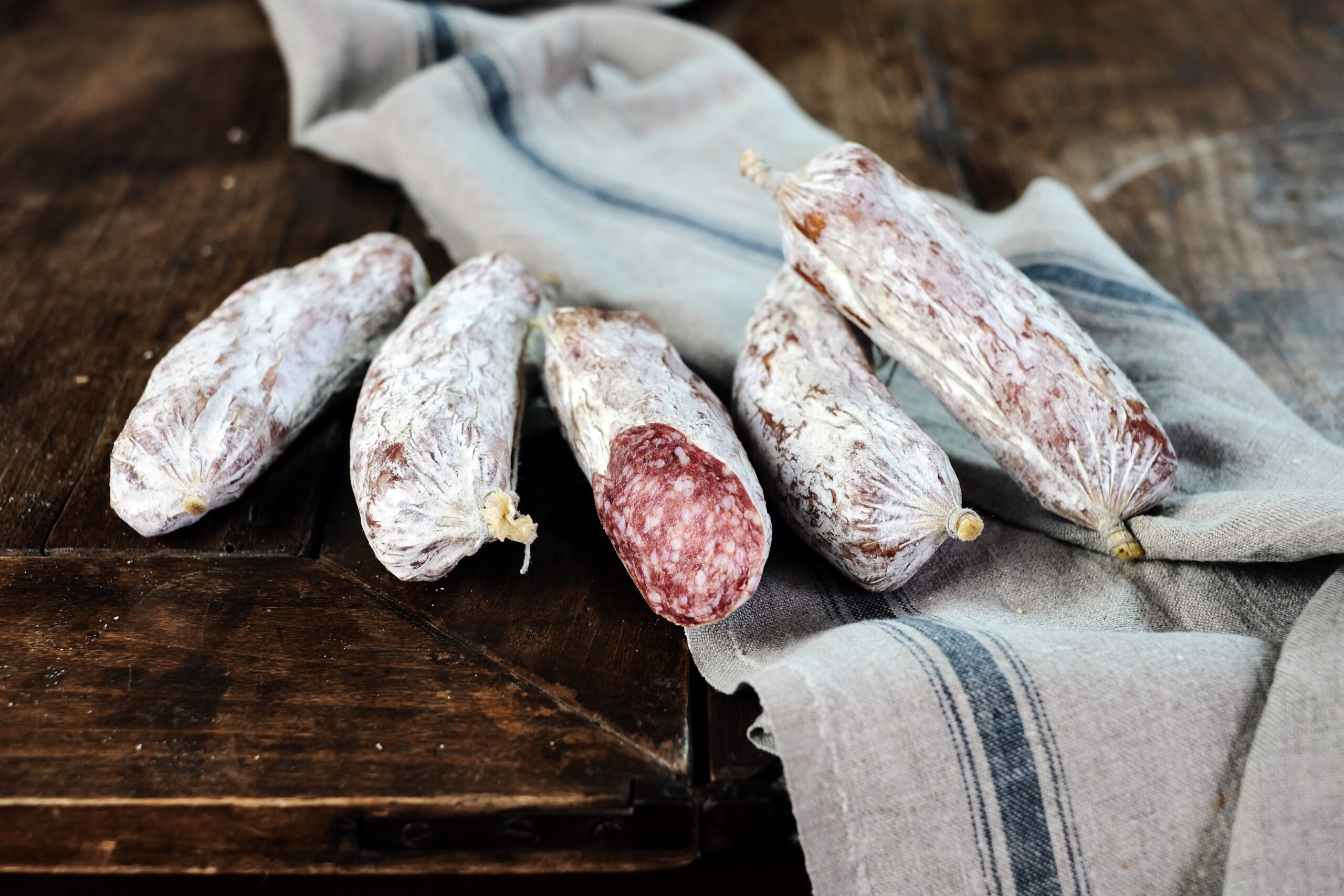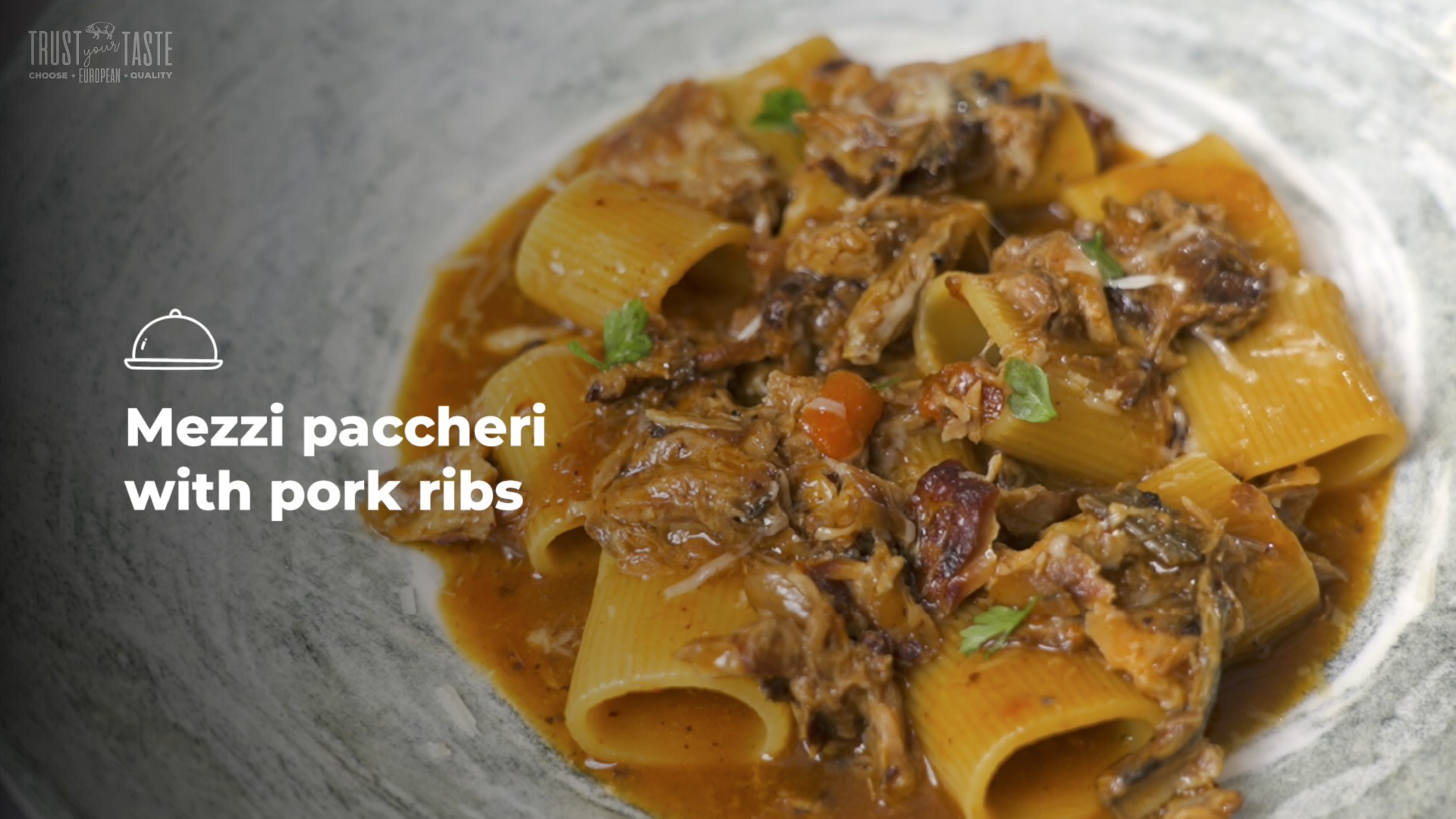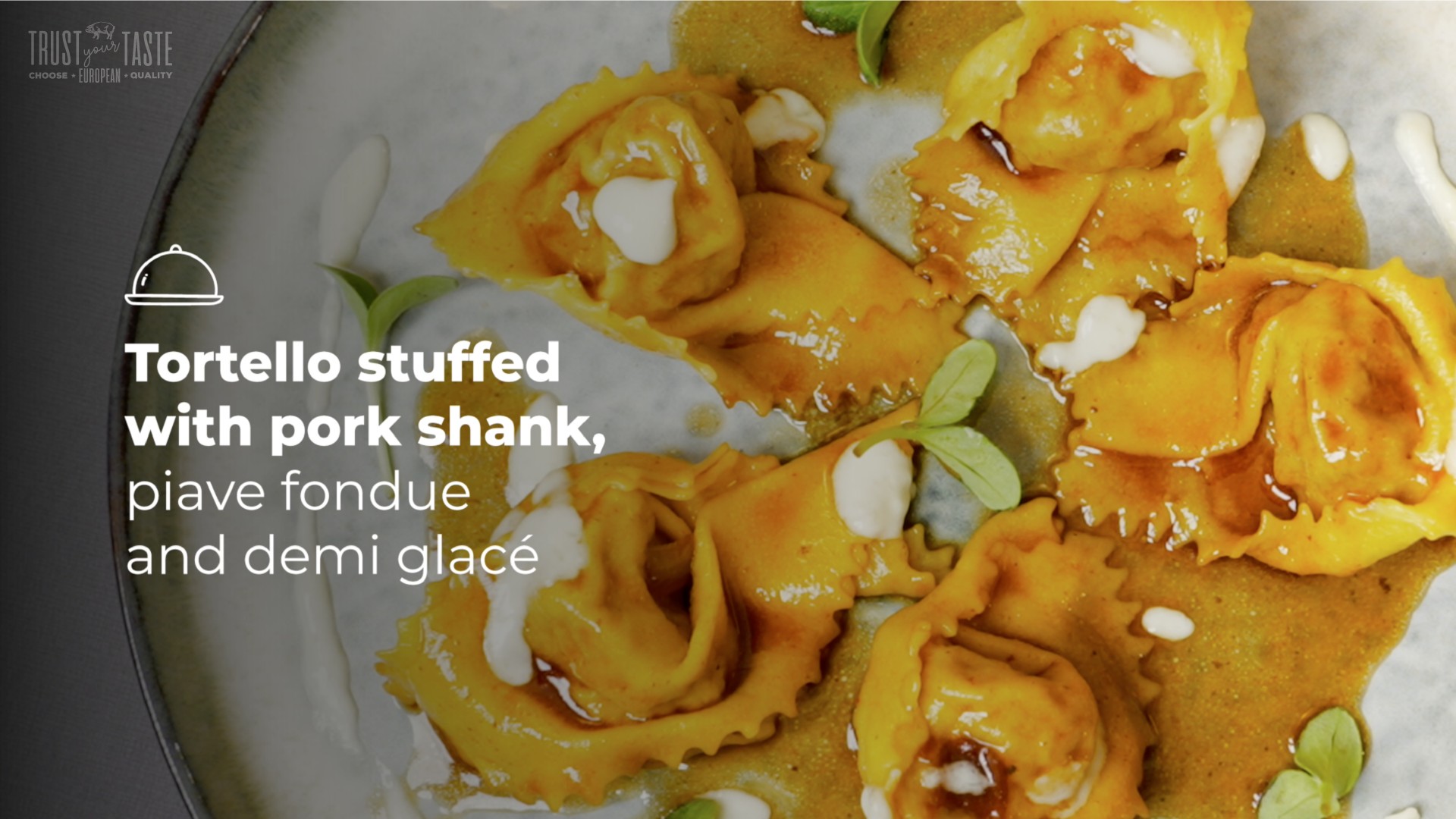
THE SALAMI IS PRODUCED IN SANT’ANTONIO
Today, we are used to finding a rich assortment of deli meats at all times of the year, but until a few decades ago, before the advent of refrigerators and the rise of modern industrial processing, it was customary to make salami once a year, at a very specific time, coinciding with the coldest days of the year. Peasant tradition recommends making salami on 17 January, St Anthony’s Day. And, as is often the case, this indication has an extremely valid reason, based on the experience and historical memory of entire generations.
The processing of meat (mincing, kneading, mixing of spices, etc.) to produce salami requires low temperatures and, even once it has been stuffed into a natural casing, the salami needs an appropriate level of constant temperature and humidity in order to mature, season (one to two months) and for the formation of noble surface moulds. In salami, moulds are essential. Their presence slows down the protein degradation process, preventing putrefaction of the meat, isolates the salami from external moisture without excessively dehydrating the interior and, finally, protects it from harmful external microorganisms that could compromise or ruin the curing process. This is why January is the best time, with ideal conditions for enjoying an excellent salami in spring.
Although in ever decreasing proportions, ‘salami-making’ is still a ritual that endures, especially in many areas of northern Italy.
The key figure is the ‘norcino’ (pork butcher): the ‘guardian of quality and traditions’, not only a skilful pig-cutter, but a true holder of a heritage of local customs and specificities. Today he is a highly specialised professional, capable of combining the valorisation of traditions with high standards of hygiene and safety in the food sector so as to always guarantee maximum consumer safety.





